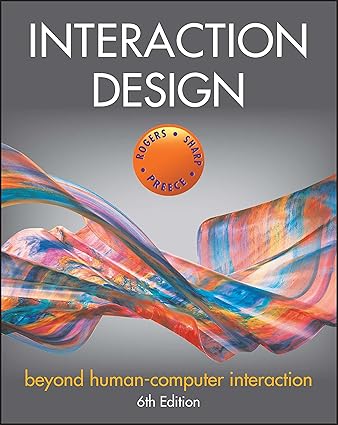Interaction Design (IxD) traditionally focused on the dialogue between humans and computers. However, its scope has significantly broadened, encompassing a wider range of interactions beyond the digital realm. This white paper explores the evolving landscape of IxD, examining its expanded focus and the implications for designers.
Interaction Design: Beyond Human-Computer Interaction - A White Paper
1. Introduction
Interaction Design (IxD) traditionally focused on the dialogue between humans and computers. However, its scope has significantly broadened, encompassing a wider range of interactions beyond the digital realm. This white paper explores the evolving landscape of IxD, examining its expanded focus and the implications for designers.
2. Expanding Horizons: IxD Beyond the Screen
- Human-to-Human Interaction Mediated by Technology:
- Social Media: Platforms like Facebook and Instagram mediate social interactions, shaping how we communicate, connect, and build relationships. IxD principles are crucial for designing intuitive and engaging social media experiences.
- Collaborative Tools: Tools like Google Docs and Slack facilitate remote work and collaboration. IxD ensures these tools support seamless communication, efficient workflows, and a positive collaborative experience.
- Human-to-Environment Interaction:
- Smart Homes: IxD plays a vital role in designing intuitive and user-friendly interfaces for smart home devices, ensuring seamless integration with daily routines.
- Urban Planning: The design of public spaces, transportation systems, and urban infrastructure involves understanding human behavior and movement patterns. IxD principles can be applied to create more human-centered and enjoyable urban environments.
- Human-to-Machine Interaction in the Physical World:
- Autonomous Vehicles: The user experience of interacting with self-driving cars requires careful consideration of safety, comfort, and trust. IxD principles are essential for designing intuitive and safe human-machine interfaces.
- Industrial Automation: IxD can improve the human-machine interface in industrial settings, enhancing safety, productivity, and job satisfaction for workers.
3. Key Considerations for Expanded IxD
- Ethical Implications:
- As IxD expands, ethical considerations become increasingly important.
- Designers must be mindful of issues such as privacy, data security, algorithmic bias, and the potential for social and economic inequality.
- Reference: Designing for People by Mike Monteiro, which explores the ethical responsibilities of designers in a technology-driven world.
- Interdisciplinary Collaboration:
- Expanded IxD requires collaboration with professionals from diverse fields, including sociologists, anthropologists, urban planners, and environmental scientists.
- Interdisciplinary teams can bring a broader perspective and deeper understanding of the complex interactions being designed.
- Emphasis on Context and Culture:
- Successful IxD must consider the specific context and cultural nuances of the interaction.
- Designs should be adaptable and responsive to the diverse needs and preferences of users across different cultures and backgrounds.
4. Conclusion
Interaction Design is no longer confined to the realm of human-computer interaction. Its scope has expanded to encompass a wide range of interactions, shaping how we live, work, and interact with the world around us. By embracing these new challenges and opportunities, designers can create more meaningful, inclusive, and human-centered experiences across all aspects of life.
References:
- Preece, J., Sharp, H., & Rogers, Y. (2019). Interaction Design: Beyond Human-Computer Interaction. John Wiley & Sons.
- Monteiro, M. (2016). Designing for People. Rosenfeld Media.
Note: This white paper provides a general overview of the evolving landscape of Interaction Design. Further research and exploration are encouraged to delve deeper into specific areas of focus and their implications for the future of the field.
Disclaimer: This white paper is for informational purposes only and should not be considered professional advice.
This white paper can be further expanded by:
- Including specific case studies of successful IxD projects that extend beyond traditional human-computer interaction.
- Discussing the role of emerging technologies such as artificial intelligence, augmented reality, and the Internet of Things in shaping the future of expanded IxD.
- Exploring the potential impact of expanded IxD on various aspects of society, such as education, healthcare, and sustainability.
I hope this provides a valuable starting point for your exploration of Interaction Design beyond human-computer interaction.
